A crunchy dill pickle recipe won’t be crisp if you skip these tips. There’s nothing worse than putting in all the work of making and canning pickles, waiting for the flavor to develop, and after eight weeks, discovering it’s soggy. Ain’t no one likes a soggy pickle, amen?!
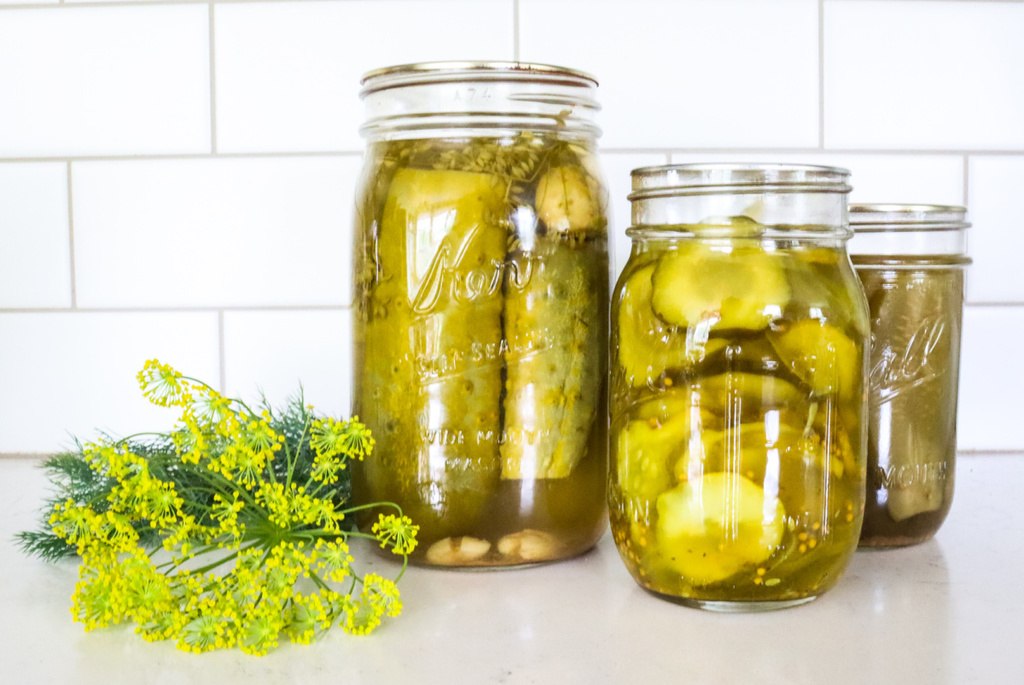
My aunt always got after me for saying ain’t when I was little, so I’m not sure if it’s the rebel in me or the seriousness of mushy pickles, but either way, I stand by the above statement.
Having canned over 400+ jars of food every year for over a decade, I’ve discovered the answer to how to can pickles and still have them be crunchy. And good news, it doesn’t require purchasing things like pickle crisp!
I’m sharing my tips to get crunchy pickles no matter what recipe you’re using, but you can’t beat a crunchy dill pickle recipe in my opinion, especially with a few cloves a garlic.
Table of Contents[Hide][Show]
-
How to get crunchy pickles+−
- 1. Use small fresh pickling cucumbers that are harvested in the early morning.
- 2. Start your recipe as soon as possible.
- 3. Remove blossom end of cucumber BEFORE soaking.
- 4. Place cucumbers in an ice water soak.
- 5. Use salt in your ice water soak.
- 6. Use whole cucumbers.
- 7. Add a leaf with tannin to the jar.
- Tips for getting crunchy pickles when canning
- Frequently asked questions
- Other Fabulous Pickling Recipes
How to get crunchy pickles
1. Use small fresh pickling cucumbers that are harvested in the early morning.
Make sure you pick your cucumbers before the sun or heat of the day is on them and don’t use overripe cucumbers. I go out to the garden by 8 am to harvest cucumbers for pickling.
Most folks agree small cucumbers equal crunchier pickles. Cucumbers are overripe if they no longer have ridges or spines and they’re turning yellow or white. Once a cucumber is soft you’ll never get it to crunch back up.
My favorite variety of pickling cucumbers is Chicago pickling cucumber. I’m also trying an heirloom Spacemaster cucumber this year, I’ll let you know what I think of its pickle capabilities.
Don’t throw those larger or slightly overripe cucumbers out, instead make this delicious Mustard Pickle Recipe.
Subscribe to Melissa K. Norris!
Get updates on the latest posts and more from Melissa K. Norris straight to your inbox.
We use your personal data for interest-based advertising, as outlined in our Privacy Notice.
2. Start your recipe as soon as possible.
The longer you wait, the likelier you’ll suffer mushy pickles. If you absolutely can’t make your pickles the day you harvest, immediately put your cucumbers in the crisper drawer of the fridge. Use them within the next few days. The sooner the better.
3. Remove blossom end of cucumber BEFORE soaking.
Removing a 1/16 to 1/4 inch from the blossom end of the cucumber (the end opposite the stem) removes the enzyme that causes soft pickles. However, most recipes don’t tell you to remove it during the soaking phase and that’s a mistake.
4. Place cucumbers in an ice water soak.
After you’ve rinsed and removed the blossom end of your cucumbers, you want to put them into an ice water soak. Get a large bowl and put a single layer of your prepared cucumbers in it. Next, put a single layer of ice cubes over the cucumbers and repeat until all your cucumbers are in the bowl between layers of ice.
5. Use salt in your ice water soak.
This is the biggie. Many will tell you to use an ice water soak but most people don’t use salt in their ice water.
Let me tell you, this makes a big difference (and is why we removed the blossom end before we started the soak).
Learn the 5 Proven Steps to Safe & Stress-Free Home Canning
This free on-demand workshop walks you through the same method I use to safely can 400+ jars a year. You’ll learn:
- When to use a water bath vs. pressure canner (get this wrong, and it’s risky)
- How to avoid spoilage with smart safety-first practices
- Exactly how to build your long-term pantry—without burnout
✅ Perfect for preserving fruits, veggies, meat, and more—even if you’ve never canned a thing.
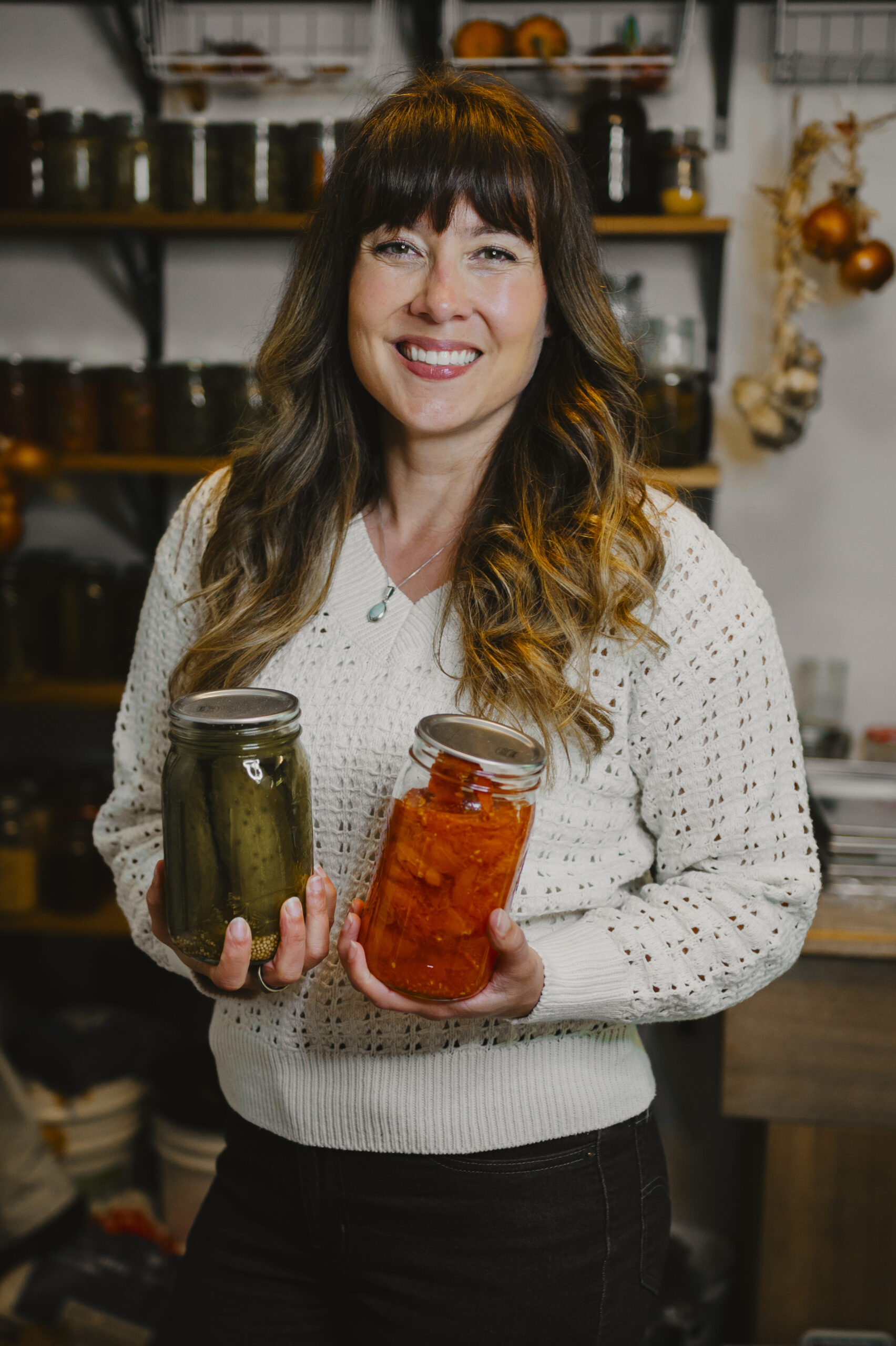
Mix 1/2 cup pickling salt (you want to make sure the salt doesn’t contain any additives or anti-caking agents in it) with 4 cups cold water and pour over the ice and cucumbers in your bowl until cucumbers are covered. Use a plate to hold cucumbers under the ice water. Let them soak 8 to 12 hours in the fridge.
This is perfect for harvesting early in the morning and then canning them that afternoon or evening. Especially helpful if you have to leave for work or are busy throughout the day.
6. Use whole cucumbers.
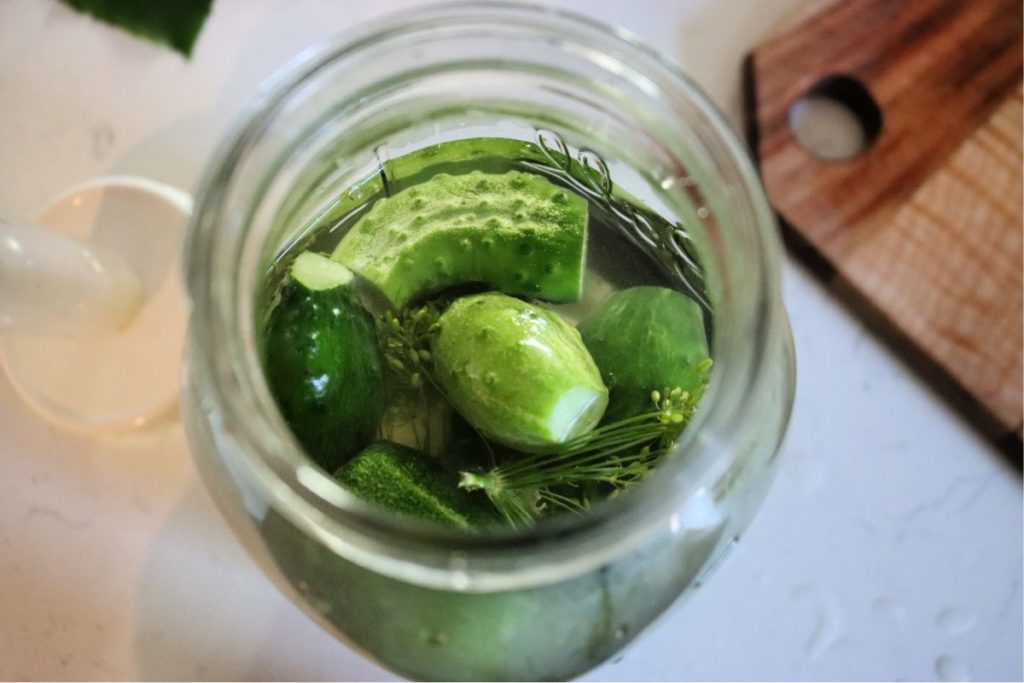
Chips and spears are fun, but truthfully, when using a water bath canner for shelf-stable pickles, the whole cucumbers are the crunchiest. You can slice them into spears or rounds at the time of eating. I still do spears and chips but have noticed they’re not as crunchy as whole cucumbers.
7. Add a leaf with tannin to the jar.
Sources of tannins for pickles are grape leaves, oak leaves, or black tea. The grape or oak leaves should be fresh (I wouldn’t try to use jarred grape leaves from the store) but the black tea you have sitting on the shelf is fine.
I use one grape leaf per jar.
How much tea per jar in pickling brine you ask?
1 teaspoon of loose-leaf black tea per quart of pickles (or 1 bag of tea per quart). You can either put the loose tea directly in the jar of pickles or let it simmer in the brine and strain out, up to you. I prefer straining as tea leaves are small and can stick to the cucumbers when removing to eat, you can rinse them off, but I find it easier to put the tea in a tea ball or strain it out.
I can’t say the reason we grow our own grapes is strictly for the leaves for my homemade pickles, but it’s definitely one of the reasons.
Tips for getting crunchy pickles when canning
When I first started canning pickles I wanted to make sure they were super crunchy. At that point in time, I didn’t understand canning safety or science, so I foolishly poured the boiling brine over my cucumbers, put on the lid, and let them seal. The jars did seal (a sealed jar doesn’t mean it’s safe, it just means a vacuum happened with hot liquid and cooler air) so I put them on the shelf.
A few months later I pulled out a jar during a family get together and EVERY single jar had lost its seal during storage. Thankfully, we hadn’t eaten any of those jars. I threw them all out (which is what you should do if a seal is compromised).
But I lost all my hard work and food. Knowing how to can pickles means you’ll have shelf-stable food ready whenever you get a hankering, even in the dead of winter.
Have the water in your water bath canner heated to 180 degrees Fahrenheit before you begin boiling your pickling brine. Once the water has reached that temperature and is maintaining, prepare your pickling recipe.
Place prepared jars into the heated canner and bring to a boil. Once boiling, process for indicated time per your recipe, jar size, and altitude. You’ll find my favorite pickling recipes (and we can pickle a ton of different vegetables) in my Home Canning with Confidence course.
You can safely use low pasteurization canning for pickles (not other canning recipes) but it MUST be followed precisely and requires a longer pickling time and thermometer.

Following the above tips will help ensure you have crunchy pickles, even when canning. Which if you want shelf-stable pickles, you should always follow a tested recipe to ensure proper acidity and processing times.
Frequently asked questions
Do I need alum in pickles?
Alum is short for aluminum and no, you don’t need it if you follow the above tips. Plus, I’m not comfortable adding any type of aluminum into my food. Part of the reason I make homemade pickles is to make sure I don’t have questionable ingredients in my food.
Do you have to use white vinegar?
No, you can use white or apple cider vinegar BUT you must use 5% acidity vinegar or higher. Never use homemade vinegar when canning.
What about pickle crisp?
Pickle crisp is food-grade calcium chloride, but I’ve never used it or purchased it and my pickles are still crunchy. I feel the fewer ingredients I have to purchase (that can’t be grown or made at home) the better.
Does canning make pickles mushy?
A canned pickle won’t be as crisp as a raw or refrigerator pickle, but there’s still a good amount of crunch when you bite into them. With the number of pickles we eat in a year and a short growing season, there’s no way I could keep us stocked in pickles without canning most of them. I do make a few gallons of fermented pickles (recipe link below) to store in the fridge.
How long to let canned pickles sit before eating?
Ideally, 6 to 8 weeks, but if you can wait 3 months before opening a jar, I find the flavors have developed even more.
What are the best pickling spices?
Personally, I use fresh dill (2 heads of dill per quart or 2 Tablespoons dill weed or seed), cloves of garlic, mustard seed, and make a mix of 2 parts celery seed to 1 part whole black peppercorn and whole allspice. I don’t buy packets of pickling spices or seasonings but stock bulk spices and make up my own.
Do I have to can my pickles?
No, you can make the pickles, cool to room temp, and store in the fridge. But if you’re not planning on canning your pickles, I recommend doing an old-fashioned salt brine fermented pickle instead.
What type of salt is best for pickles?
Either canning salt or kosher salt. You don’t want any additives or anti-caking agents. Additives can create cloudy brines and anti-caking agents aren’t safe for canning.
Should I use pickling lime?
You must be very careful when using pickling lime, making sure to rinse it fully from the cucumbers as it changes the pH of a recipe making it unsafe for canning. I have never used it nor do I plan on it. To make sure you’re up to date and using safe canning practices, go through my FREE canning safety video series here!
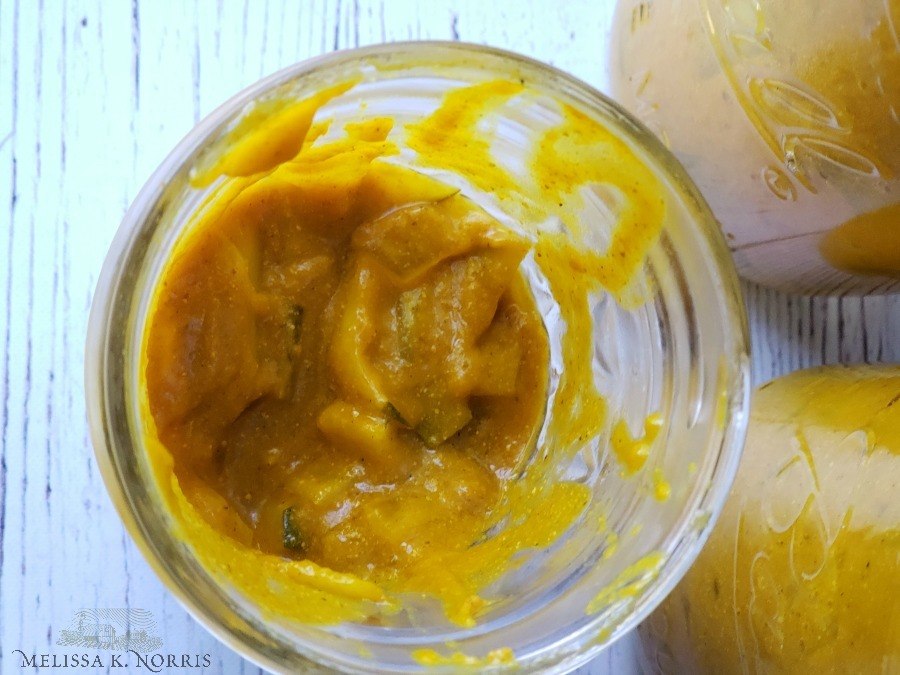
Other Fabulous Pickling Recipes
Fermented Pickle Recipe Old-fashioned Saltwater Brine Pickles these are delicious, crisp, and provide you with gut-healthy probiotics!
How to Make Mustard Pickles – Great-Grandma’s Recipe
Pickled Asparagus Recipe (Canned, Quick, or Refrigerator)
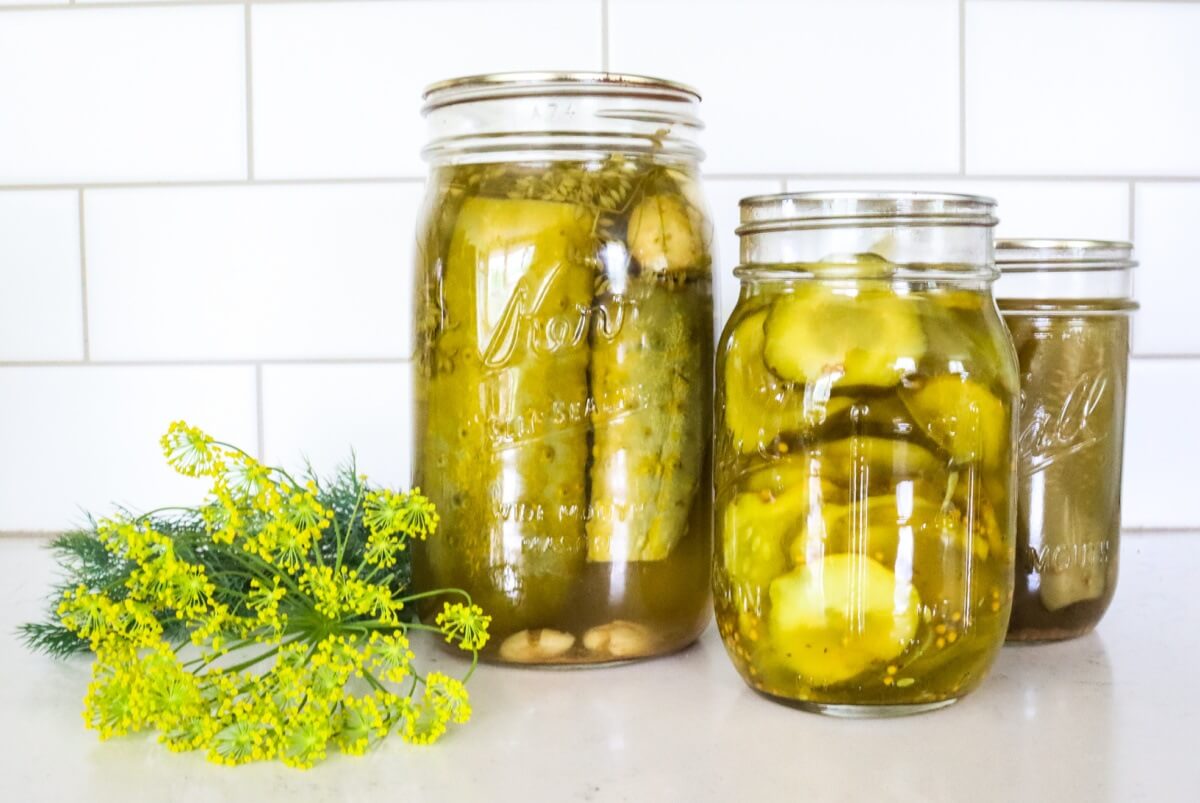
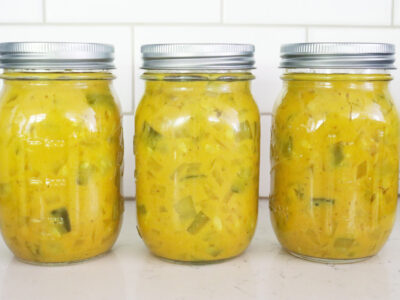

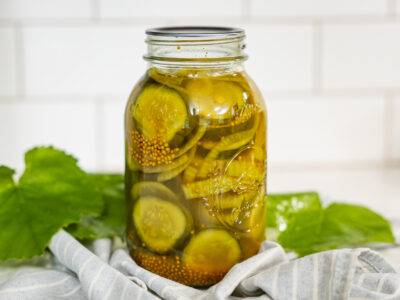


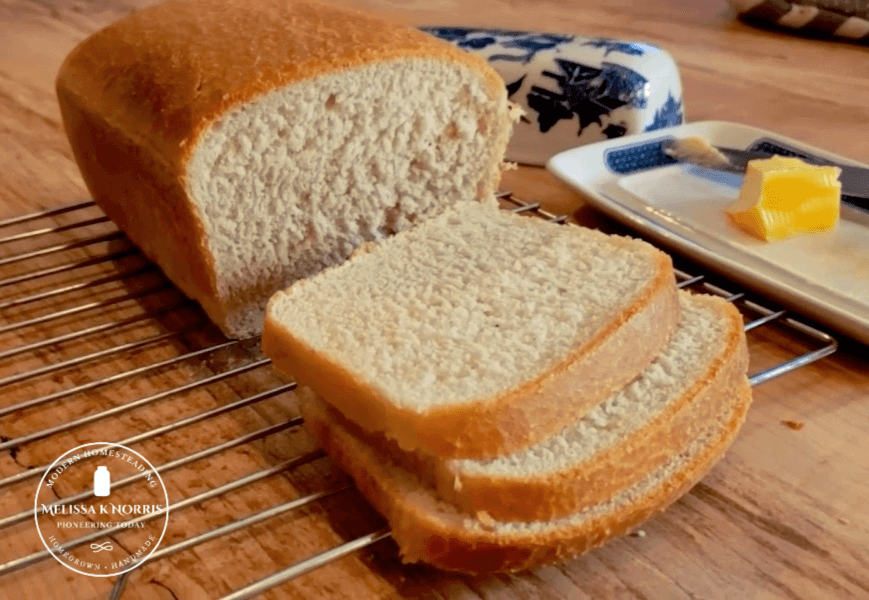
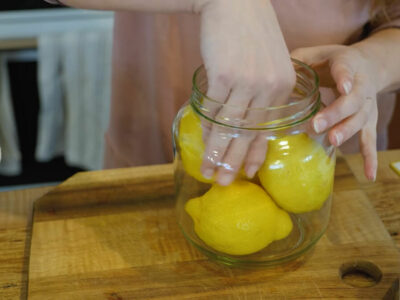


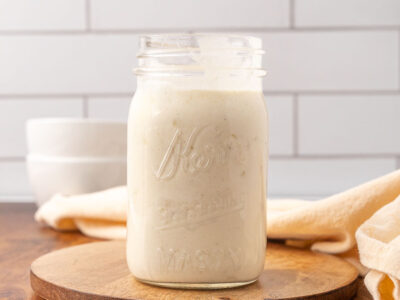
JHONBET77
why do you need to use tannin in the jar of pickles?
I just got your book Everything Worth Preserving and tried the garlic pickles. I canned them as the directions said and used the 7 tips to keep them crunchy but they still turned out mushy! (I opened one to check before I made a whole bunch). I really want to be able to can them safely but I’m starting to think its impossible ?. My husband is trying to tell me to only can them for 2 or 3 minutes like his grandpa did ?.
Use larger cucumbers and do you have hard water? Hard water can make pickles mushy. You can boil it for 15 minutes then let cool covered for 24 hours if it is.
I wasn’t able to get crisp pickles until I did the low temp pasteurization method. I have done all these tips many times, each time hoping to get a crisp pickle but they have always been mushy. Look up low temp pasteurization for pickles on YouTube. https://youtu.be/7dlBiTeVdXE?si=avuKjGXvAHLo4a86
Hey Melissa, I been listening to your podcast I want to do the crunchy dill pickles for canning, but I haven’t seen on the recipe for what the brine is or maybe I’m overlooking, so could you please explain what the brine is, and how much, or is it the salt water that the cucumbers soaked in?
The USDA requires jars and lids to be sterilized for : All jams, jellies, and pickled products processed less than 10 minutes.
That is why your pickles spoiled.
How do you store your grape leaves before you are ready to use them for pickling?
In the crisper drawer of the fridge
I soaked my whole pickling cucumbers in the ice, water and salt for 8 hours in the fridge as you suggested. Any part of the cucumber that was close to the ice froze. I still continued to process them. I don’t know how they taste as I’m going to wait a few weeks but any part that had been frozen is transparent. I hope this doesn’t effect the texture. Why the ice? This was my first time doing canned pickles. I’ve been making freezer pickles for a few years. I do a salt soak but never with ice or in the fridge.
The ice helps keep them extra cold, which helps to keep them crisp. I’ve had the best results by following that method, I first found it in my Ball book years back.
I am confused how salt would help crisp them? Salt tends to soften generally.
Last year I used tea leaves in my jars and it turned my pickles brown. Also this year I made dill pickles and my garlic turned blueish green. What happened.
Thank tou
It’s normal for garlic (no other vegetable) to turn blueish-green when canning, no need for alarm. It happens with pickling due to the vinegar.
Will it hurt to soak the pickles for more than 12 hours? I brought them home around 1:00 which makes it a very late night if I make the pickles today.
Where do you find fresh grape leaves?
We grow our own. You could check local farmer markets.
We have lots of wild grapes growing in our woods. Would a leaf from them provide the tannin I need?
Yes, that should work great
You have recommended the gray sea salt for fermenting pickles. Is this what you use for canning pickles or general cannon salt as well?
Pickling salt has become very hard to find near me.
Thanks
You can use it for canning, I usually use Redmond’s Real salt as I buy it in bulk.
What size of pressure canner do you suggest?
I loved these tips, but I’m still unsure about canning. Do you have a refrigerated pickle recipe to get me started. Thank you.
I have an over abundance of lemon cucumbers. Will they make okay pickles or will they turn to mush?
I haven’t seen them used in canned pickles before.
I wish I had a printer is there a link u could give me to give my daughter
This is the link to this post https://melissaknorris.com/tips-for-crunchy-pickles-every-time/
A tip from a friend of mine: Add a small piece of a horseradish leaf to the final pickling process for a kiss of zing
Thank you for this! I’m on my third batch of pickles this summer and I’m trying to perfect the recipe. After the 8-12 hours in the salt water brine, do you rinse the pickles before packing them into jars?
Yes, rinse them thoroughly in cold water and allow to dry in a colander while you’re preparing the jars, brine, spices, etc.
I watched a video where she only drained, but did not rinse the cucumbers after a couple hours in the salt water. Is there a safety reason for rinsing? An effect on how they turnout? Let me know. I drained but didn’t rinse mine and now I’m second guessing.
It will likely be too salty. You won’t know until you try one, in the future, rinse the salt off.
I canned bread and butter pickles last week, it did not ask for hot water bath, should I still do it, they sealed but don’t know how tight the seal is.
To safely reprocess it should be done within 24 hours. The seal doesn’t mean it’s safe, just that it was hot enough as it cooled it created a vacuum. They should go in the fridge and aren’t considered shelf-stable, however, I would be nervous that it wasn’t a canning recipe or an updated safe one if it didn’t tell you to process and if they’ve been sitting on the shelf for a week it’s a gamble on consuming them. Erring on the side of caution would say not too. You could call your local county extension office with the exact recipe and ask their advice.
Hi Melissa
How do you feel about adding horseradish leaves or leaf to the jar along with the other ingredients. I read that adding the actual horse radish root. But just wonder about the leaves. Flavour, crispness, safety ?
Thank you
will it hurt my pickles if i do all your tricks for crispy pickles AND add pickle crisp???
You won’t hurt them I just have never needed it 🙂
Your web page is very helpful. I am trying my hand at canning this year. I am starting with Jam because I don’t like all the added sugar. Also my daughter in law is pregnant and is not eating added sugars to anything. I am looking forward to trying your pickle recipe as well since she is also eating pickles like crazy and we all love pickles in my family. Thank you so much.